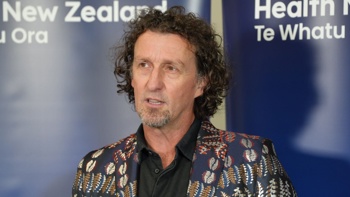Stargazers nationwide are still buzzing about the spectacular blood supermoon event they were treated to overnight.
A clear night sky provided perfect conditions for those who stayed up late to catch the once in a life-time event, with many capturing the different stages of the moon in photos.
Staff from Otago Museum set up shop at the University of Canterbury's Mt Roy Observatory in Tekapo and showed off beautiful images of the lunar display.

The supermoon photographed in Christchurch. (Photo / George Heard)
"How lucky we are," they posted online about 1am.
"The South Island was the place to be to see the rare blood supermoon - and what an amazing clear night we had."
Staff said they felt "very blessed" to have experienced the sight - the first blood supermoon since 1982.

The blood supermoon captured in Lower Hutt, Wellington. (Photo / Cijin Johnson)
Over at the Dunedin Astronomical Society, past president Ash Pennell said up to 80 members of the society and the public gathered at the observatory to watch the lunar eclipse.
The moon was entirely within the earth's shadow for about 15 minutes from 11.11pm.
He said everyone was delighted at the spectacle and extra telescopes had been made available.
"I think it's the event of the year," Pennell said.
It was an "excellent night" in the city for viewing, better than for other recent eclipses.
Several factors, including the close proximity of the earth and moon, added to the occasion.
Dunedin resident Jacquetta Burleigh said the moon was "bright as a button" and she enjoyed the "community event" at the observatory.
What is a blood supermoon?
We can think of it as the combination of two lunar spectacles.
Blood moons - also known as total lunar eclipses - occur when the Earth lines up between the Moon and the Sun.
This hides the Moon from sunlight and blocks most of the blue light, with the remaining light refracting onto the Moon's surface and causing a red glow.
"Red light is often seen during sunset because we view it through the thicker parts of Earth's atmosphere, and being of a longer wavelength, more red light gets through," Stardome Observatory expert John Rowe said.
"When the Moon goes into Earth's shadow, the reddish light passing through Earth's atmosphere around the limb of Earth refracts onto the Moon, creating a blood-red colour across the lunar surface.
"Unlike solar eclipses, lunar eclipses are completely fine to view with the naked eye."
A "supermoon", meanwhile, occurs when the Moon is at the closest point in its orbit around Earth - making it appear about 14 per cent larger than a normal full Moon and around 30 per cent brighter.
How rare is it?
During every 27-day orbit around Earth, the Moon reaches both its perigee, about 363,300km from Earth, and its farthest point, or apogee, about 405,500km from Earth.
Total lunar eclipses are relatively common - the next one after tonight's is May 15-16, although it won't be visible from New Zealand.
Supermoons are more common still - one was visible only a month ago.
There are also two super new moons - or when a new moon is at its closest point to Earth - on November 4 and December 5.
But it's the combination of a total lunar eclipse and a supermoon that's rare.
The eclipse takes place just a few hours after the Moon reaches perigee, the closest point to Earth on its orbit, making it a "Super Flower Blood Moon".
Stardome has reported the last "blood supermoon" visible from New Zealand was December, 1982 - but a "blood supermoon" also occurred on January 31, 2018, and could be seen here.
Take your Radio, Podcasts and Music with you









